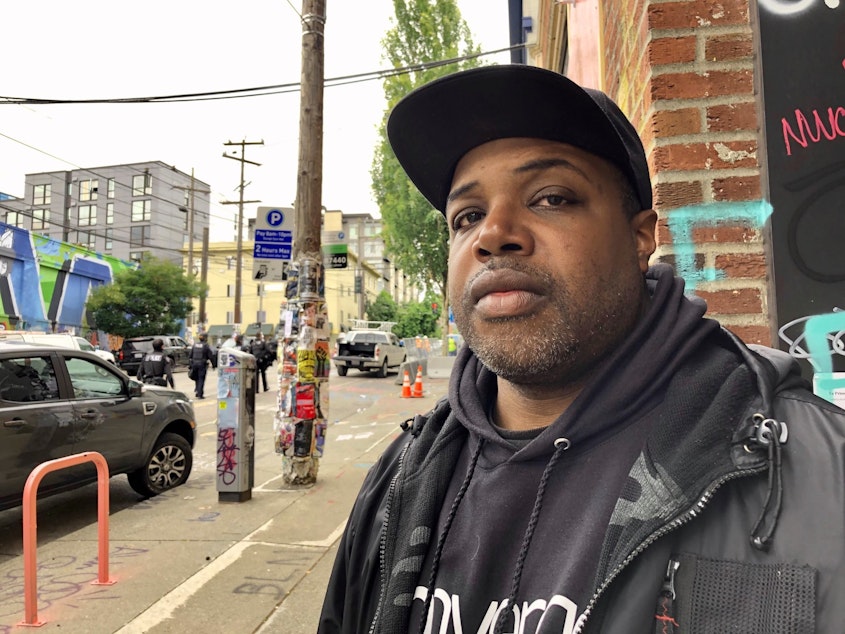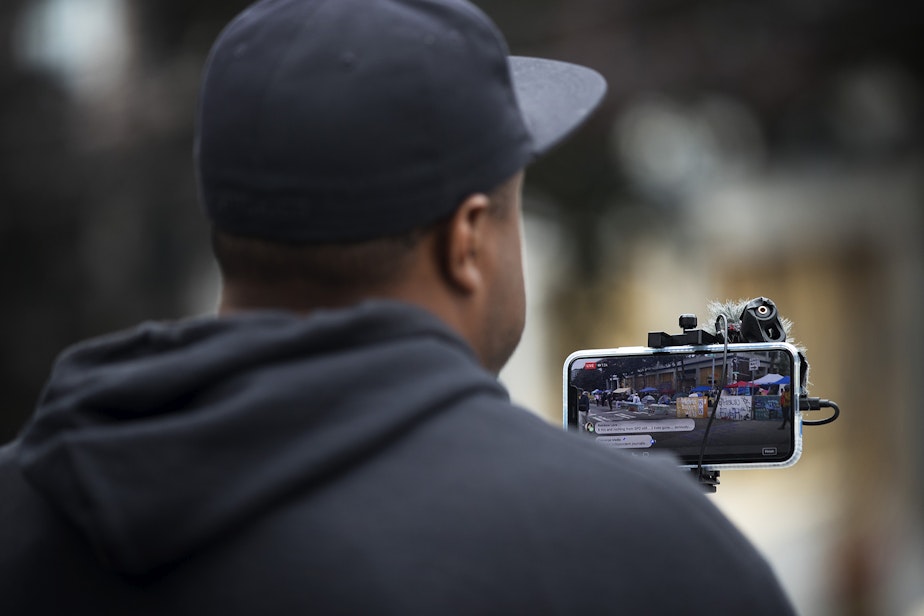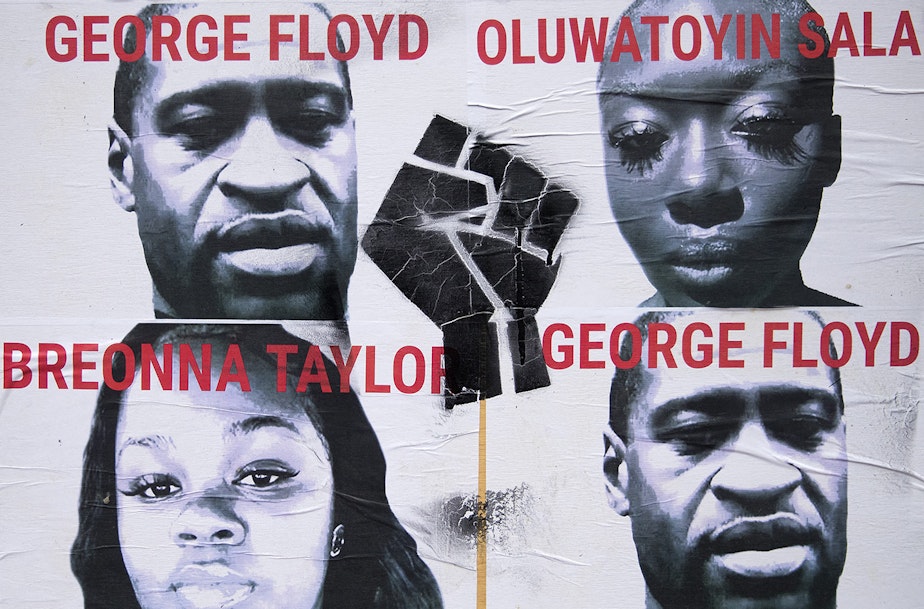Omari Salisbury on Seattle's CHOP, and the movement one year later

As the world marks one year since George Floyd's murder, Seattle is preparing for another anniversary: the creation of the CHOP, or the Capitol Hill Occupied Protest.
Through both events, a familiar voice in the Black community and Seattle Black media emerged as a trusted guide to people around the globe.
Omari Salisbury's nightly live-streamed coverage of the protests was raw. His video revealed a different perspective behind the so-called "pink umbrella" incident, during which police released tear gas on protesters, the surrounding neighborhood, and Salisbury himself.
In a video he captured on his phone, Salisbury is seen getting gassed head-on by an officer, even as he calls for calm.
"We're [still] dealing with, man, the mental scars, the physical scars. You know, I was injured -- a lot of us here at Converge were injured during the Seattle protests," says Salisbury, founder of Converge Media.
He recalls burns and hearing loss caused by flash-bangs as well as the emotional impact of witnessing so much trauma.
"We were really on the ground, 24 hours a day from June 1 to July 1," he says. "Man, it's still raw to be honest with you. And it's probably because it's information overload. We took in everything."

Salisbury has been called the chief witness of Seattle's historic season of protest -- though, he later told KUOW he never really saw himself that way.
He says what happened in the streets last summer did lead to historic action in Olympia. Washington now has its most diverse Legislature in the state's history, and communities came together to affect change around policing that policy advocates spent years laying the groundwork for.
"Take a second, take a deep breath and look at that accomplishment," he says of the state-level results.
"Victory" was not as clear in Seattle, though.
Sponsored
"It's definitely still a mess down there at City Hall, with a lot of people pointing fingers at each other," Salisbury said. "And as usual... the Black community sits in the middle and, you know, nothing ever happens."
Whether local politicians will set aside political infighting and deliver on lofty promises made last year is yet to be seen.
Seattle Mayor Jenny Durkan promised to devote $100 million to "communities we have neglected."
The Seattle Times reports none of that money has been disbursed to date. Most is expected to be allocated later this year; some community safety sums received small amounts allocated in 2020.
Seattle City Council members advocated for cutting the Seattle Police Department's budget.
Sponsored
And citizens were told that a new approach to policing was coming.
Meanwhile, the community is still processing the CHOP.

Salisbury says the last year has not been enough time to fully grapple with what happened, what he witnessed and what had to happen to get to this point in the nation's history.
"First of all, let's say their names: Lorenzo Anderson, Jr. and Antonio Mayes, Jr.," a 19-year-old and 16-year-old who were killed in the CHOP. "There's a lot of things that happened in the CHOP that were not positive at all," Salisbury said.
Sponsored
"But also, tens of thousands of people made their way up there on Capitol Hill. ... So many people stopped [in front of the East Precinct] at the candlelight vigil and at the memorial wall, because people wanted to be around others who were impacted by this crime against humanity."
But asking for a tangible takeaway is too much to ask even now.
"We're still learning. We're still feeling," Salisbury says, his voice rising. "A lot of us still have raw feelings. We haven't even healed enough from last summer's events."


